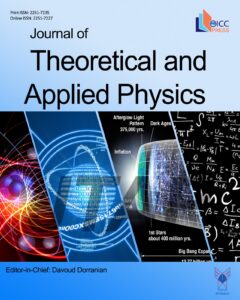Studying the non-thermal plasma jet characteristics and application on bacterial decontamination
Authors
Abstract
AbstractNon-thermal atmospheric-pressure plasma jet represents an excellent approach for the decontamination of bacteria. In this paper, we want to improve and characterize a non-thermal plasma jet to employ it in processes of sterilization. The electrical characteristics was studied to describe the discharge of the plasma jet and the development of plasma plume has been characterized as a function of helium flow rate. Optical emission spectroscopy was employed to detect the active species inside the plasma plume. The inactivation efficiency of non-thermal plasma jet was evaluated against Staphylococcus aureus bacteria by measuring the diameter of inhibition zone and the number of surviving cells. The results presented that the plasma plume temperature was lower than 34 ∘documentclass[12pt]{minimal} usepackage{amsmath} usepackage{wasysym} usepackage{amsfonts} usepackage{amssymb} usepackage{amsbsy} usepackage{mathrsfs} usepackage{upgreek} setlength{oddsidemargin}{-69pt} egin{document}$$^circ$$end{document}C at a flow rate of 4 slm, which will not cause damage to living tissues. The diameter of inhibition zone is directly extended with increased exposure time. We confirmed that the inactivation mechanism was unaffected by UV irradiation. In addition, we concluded that the major reasons for the inactivation process of bacteria is because of the action of the reactive oxygen and nitrogen species which formed from ambient air, while the charged particles played a minor role in the inactivation process.



